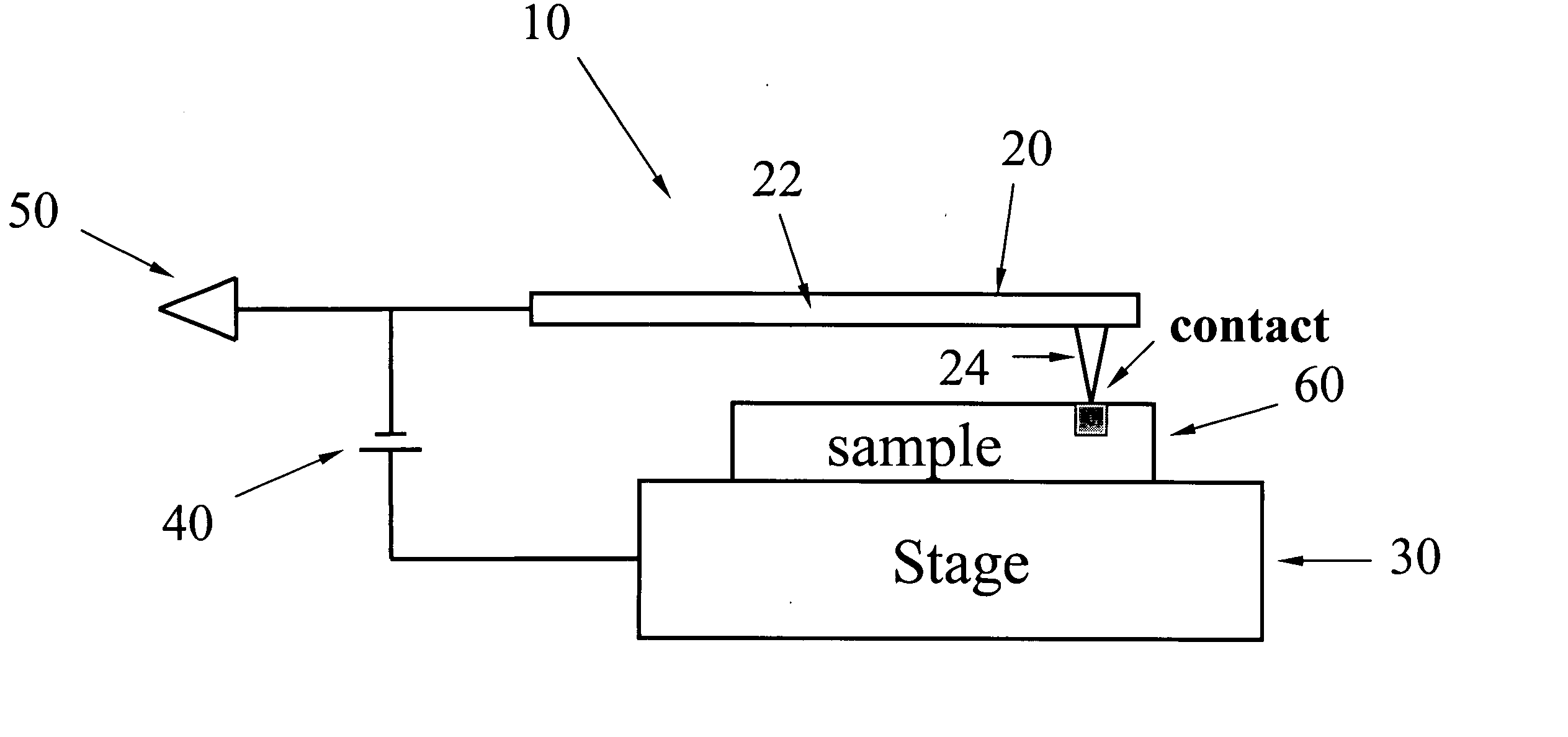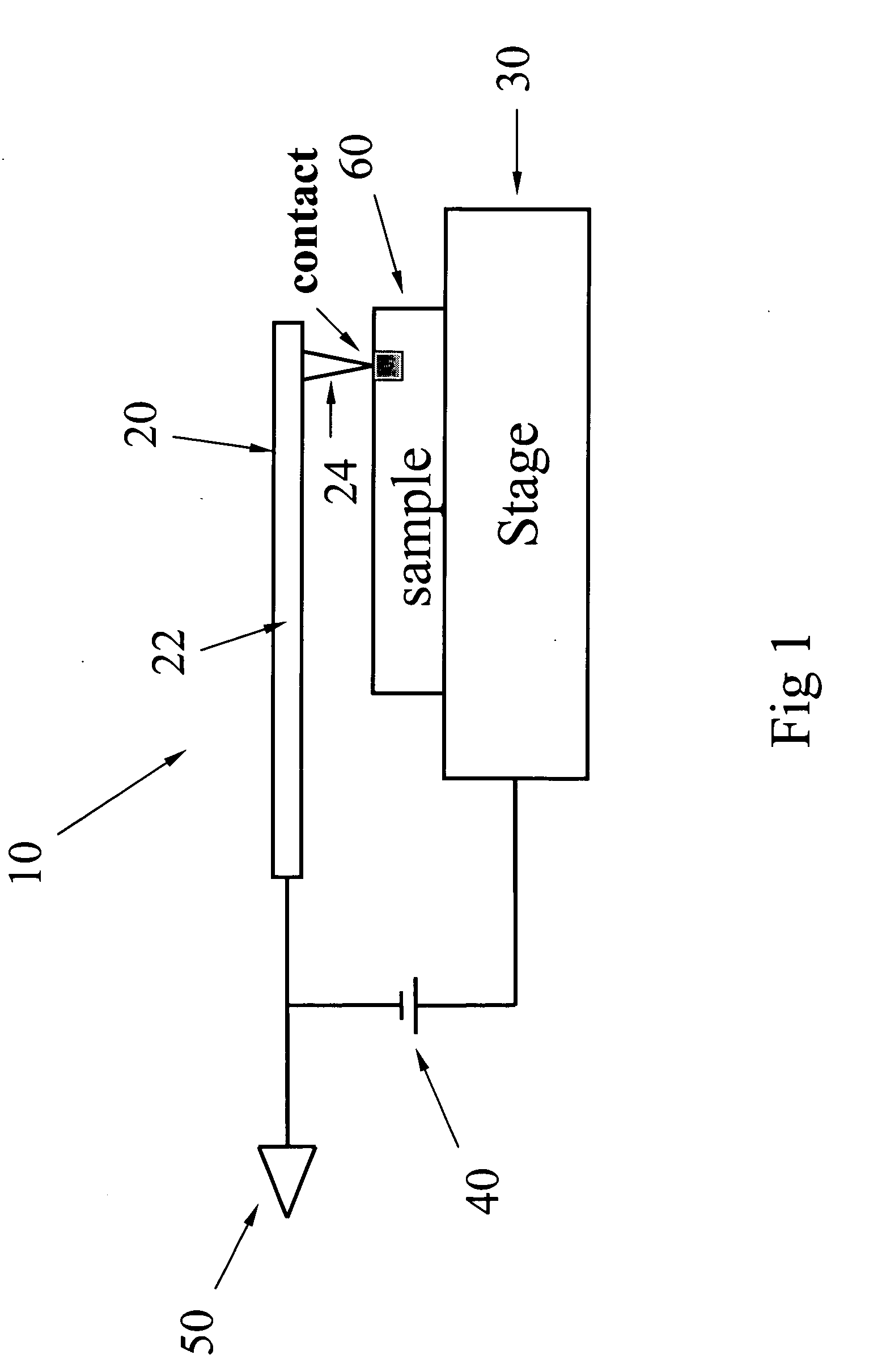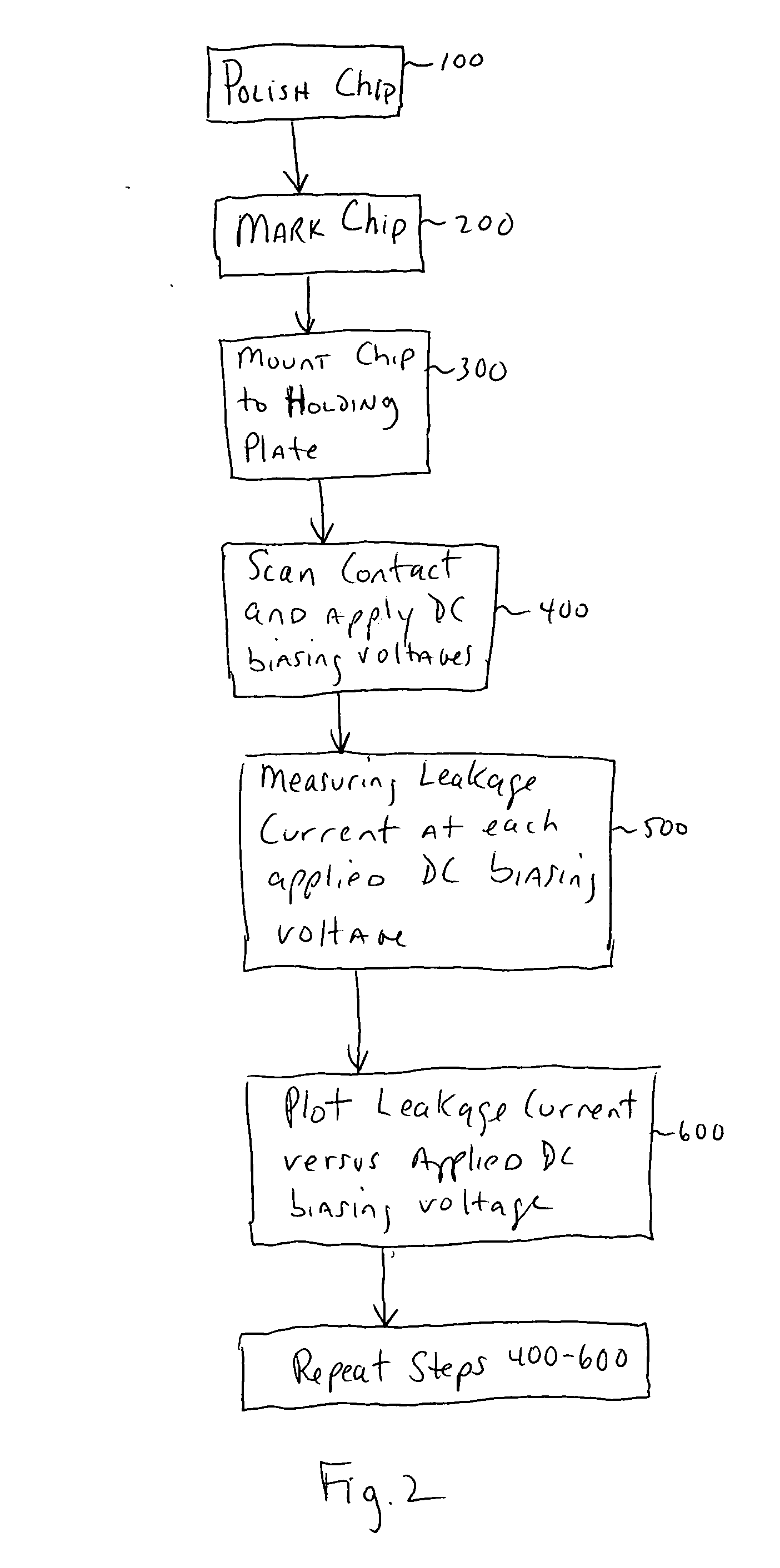Method using conductive atomic force microscopy to measure contact leakage current
a technology of atomic force microscopy and contact leakage current, which is applied in the direction of individual semiconductor device testing, semiconductor/solid-state device testing/measurement, instruments, etc., can solve the problems of large leakage current, large leakage current, and defective contacts that are produced
- Summary
- Abstract
- Description
- Claims
- Application Information
AI Technical Summary
Problems solved by technology
Method used
Image
Examples
Embodiment Construction
[0012] The present invention is a method for measuring the current leakage (tunneling current) of a contact of a semiconductor device at the nano-ampere level and lower current levels, such as pico-ampere level. This is accomplished in the present invention with conductive atomic force microscopy. The ability to measure the micro-current leakage of a contact allows for high resolution and high sensitivity current mapping of the contact, i.e., current leakage versus applied voltage curve (I / V curve). The resolution and sensitivity of this current mapping is much better than in conventional methods, such as voltage contrast performed on a SEM. Furthermore, the method of the present invention provides a better understanding about the relationship between an abnormal contact and its adjacent contacts through their I / V curves. In addition, the detailed data obtain with the method of the invention allows for the implementation of an appropriate physical failure analysis technology to iden...
PUM
 Login to View More
Login to View More Abstract
Description
Claims
Application Information
 Login to View More
Login to View More - R&D
- Intellectual Property
- Life Sciences
- Materials
- Tech Scout
- Unparalleled Data Quality
- Higher Quality Content
- 60% Fewer Hallucinations
Browse by: Latest US Patents, China's latest patents, Technical Efficacy Thesaurus, Application Domain, Technology Topic, Popular Technical Reports.
© 2025 PatSnap. All rights reserved.Legal|Privacy policy|Modern Slavery Act Transparency Statement|Sitemap|About US| Contact US: help@patsnap.com



